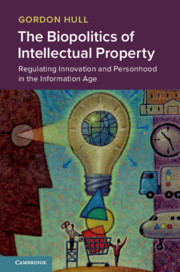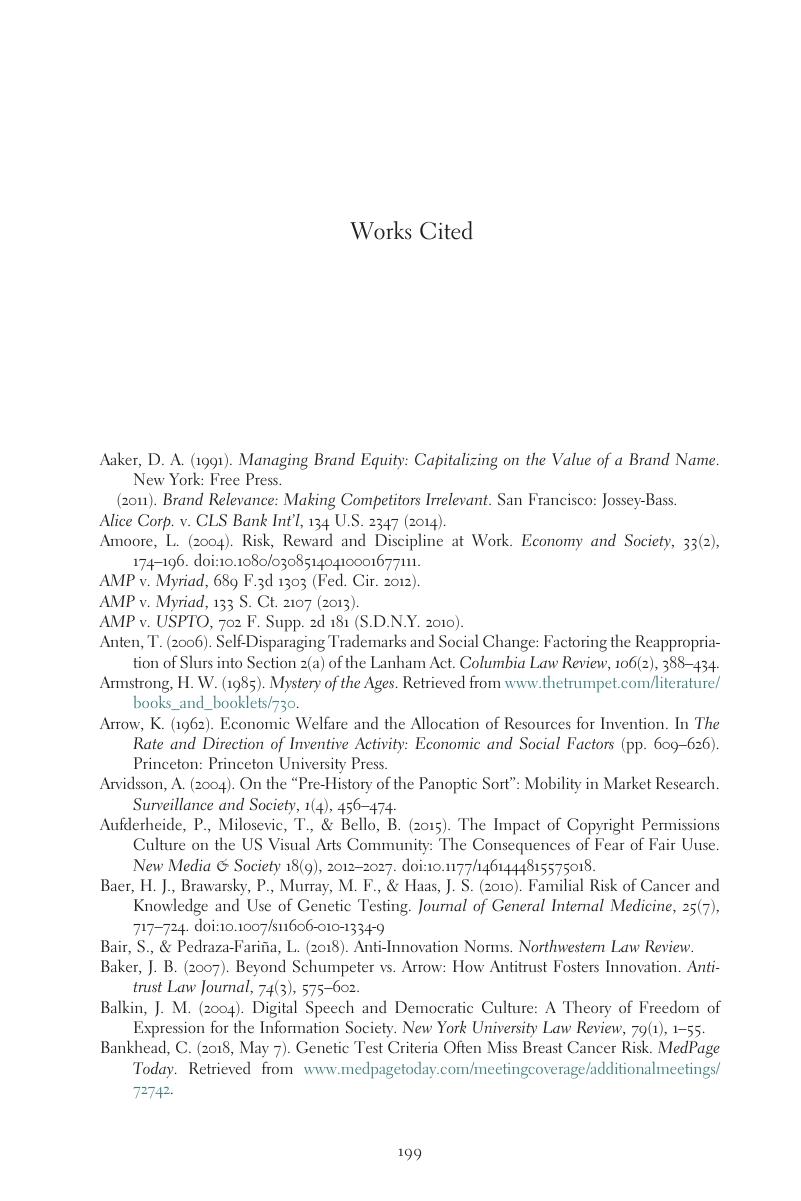 The Biopolitics of Intellectual Property
The Biopolitics of Intellectual Property Works Cited
Published online by Cambridge University Press: 01 November 2019
Summary

- Type
- Chapter
- Information
- The Biopolitics of Intellectual PropertyRegulating Innovation and Personhood in the Information Age, pp. 199 - 218Publisher: Cambridge University PressPrint publication year: 2020


